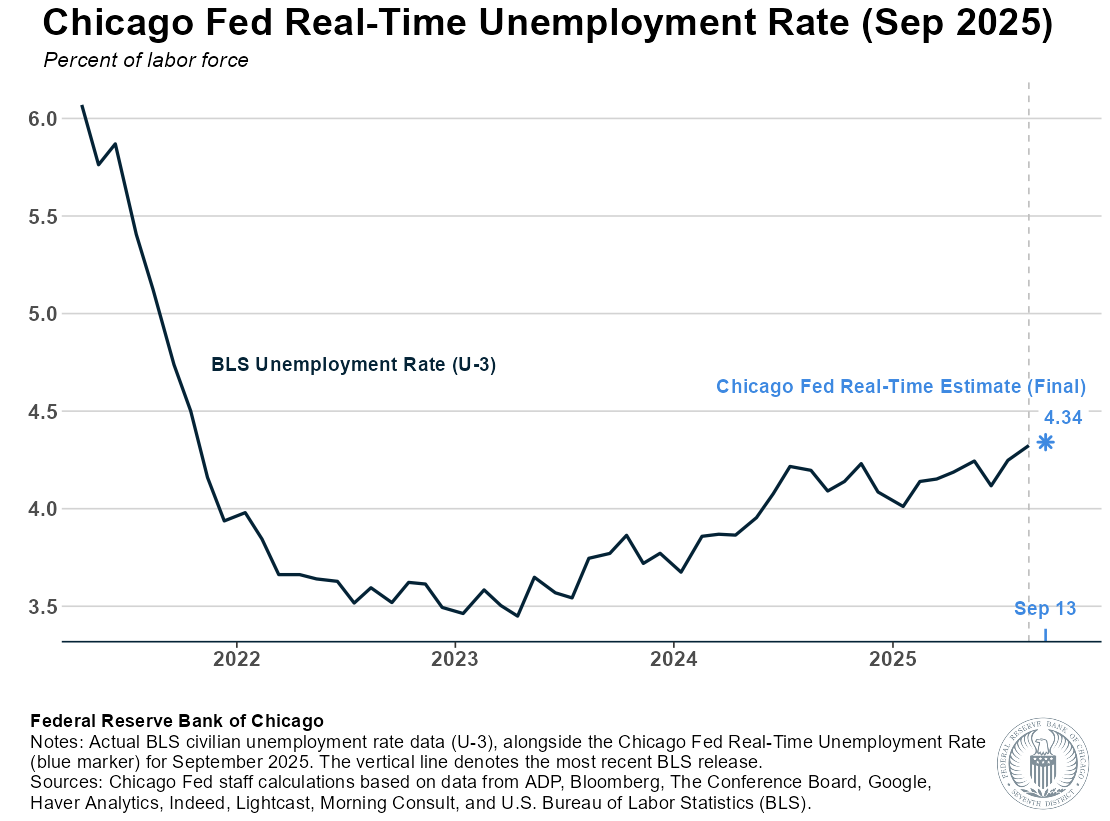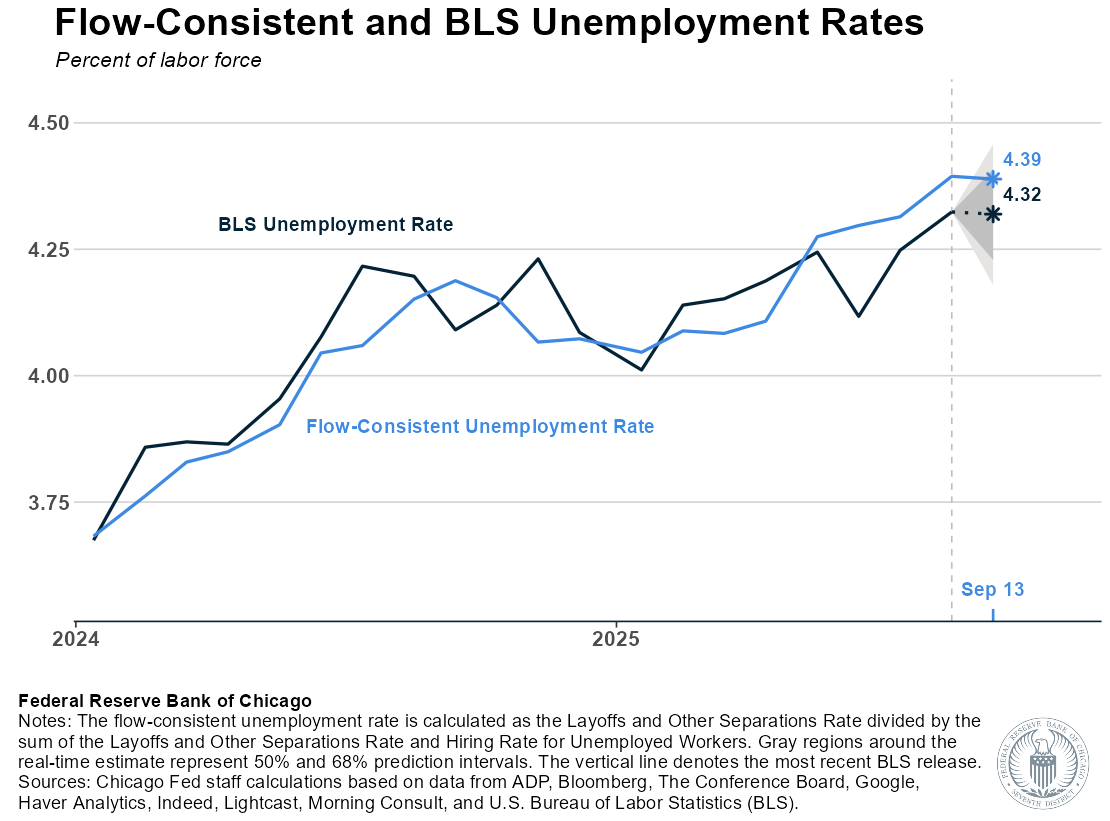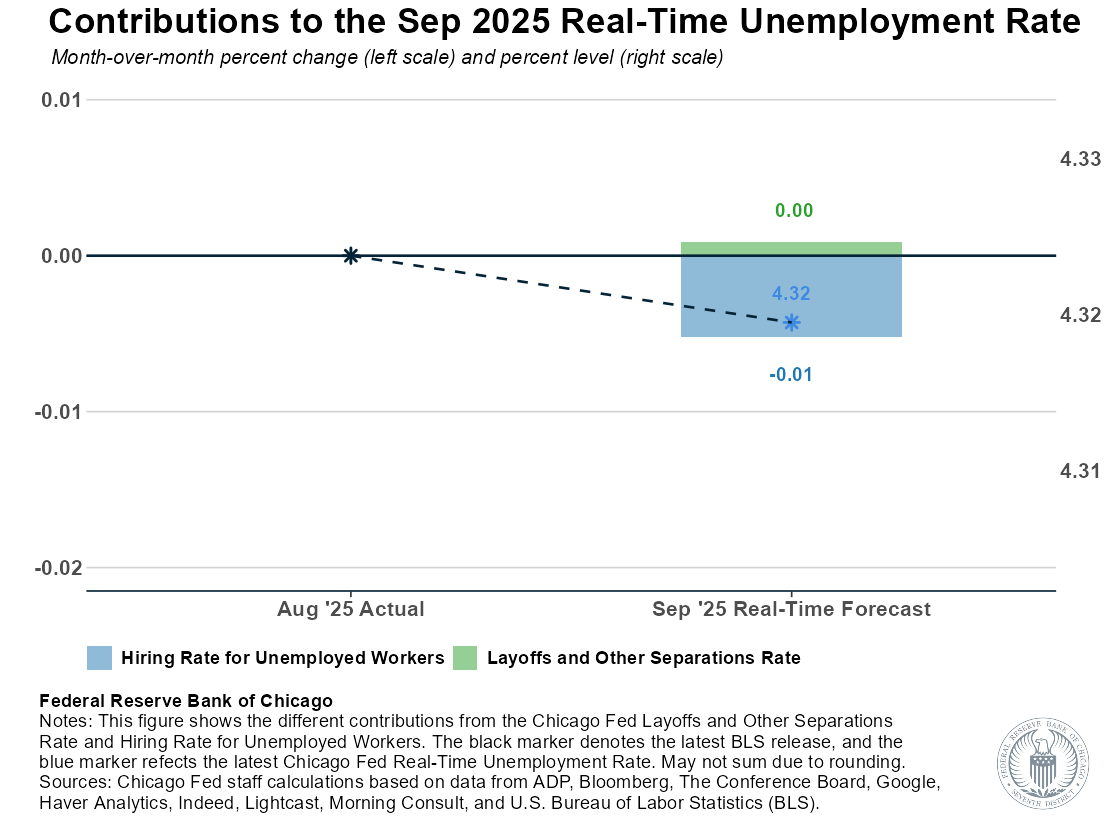Forecast Details
The Chicago Fed Real-Time Unemployment Rate Forecast combines real-time labor market data with monthly data from the Current Population Survey (CPS) by using partial least squares to estimate the best fit of CPS-derived job finding and job separations rates with the real-time data. The best fit for the job separations rate is the Chicago Fed Layoffs and Other Separations Rate, and the best fit for the job finding rate is the Chicago Fed Hiring Rate for Unemployed Workers.

The real-time labor market data used to inform the partial least squares model are as follows:
- Initial unemployment insurance (UI) claims as a share of UI covered employment
- Insured unemployment rate (continuing UI claims/covered employment)
- Google Trends unemployment topic index
- Bloomberg consensus forecast for the unemployment rate
- Morning Consult’s unemployment rate, pay loss rate, and job search activity indexes
- Layoffs and discharges and hiring rates from the Job Openings and Labor Turnover Survey*
- Conference Board’s labor market differential index (jobs plentiful vs. hard to get) and a labor market differential calculated from the FRBNY Survey of Consumer Expectations (mean probability of finding a job in 3 months less mean probability of losing a job)
- Job openings rates based on Indeed and Lightcast job postings and ADP employment
*Currently predicting by Revelio Labs hiring and attrition rates, National Federation for Independent Business jobs hard-to-fill index, and Announced Job Cuts from Challenger, Gray & Christmas.
The statistical model underlying the Chicago Fed Real-Time Unemployment Rate Forecast relates changes in the U.S. Bureau of Labor Statistics (BLS) civilian unemployment rate (U-3) to changes in the flow-consistent unemployment rate (the ratio of the job separations rate to the sum of the job finding and job separations rates) to produce a BLS unemployment rate forecast.
The following figure shows recent readings of both the flow-consistent (blue line) and BLS unemployment (black line) rates since the beginning of 2024, alongside the latest flow-consistent unemployment rate (blue marker) and the Chicago Fed Real-Time Unemployment Rate Forecast (black marker). The dark and light gray regions (fans) surrounding the Chicago Fed Real-Time Unemployment Rate Forecast reflect 50% and 68% prediction intervals, respectively.

The next figure shows the different contributions from the Chicago Fed Layoffs and Other Separations Rate and the Chicago Fed Hiring Rate for Unemployed Workers to the Chicago Fed Real-Time Unemployment Rate Forecast.

Technical Note
We use the Shimer (2005, 2012) method to construct estimates for both the job finding and job separations rates from the Current Population Survey (CPS).
The CPS-derived job finding rate () is calculated as , where is the unemployment level and is the number of newly unemployed workers during the month.
The CPS-derived job separations rate () is calculated by setting the following mathematical expression equal to zero and solving for : , where is the unemployment rate.
These CPS-derived rates are then combined with real-time labor market data using partial least squares to estimate the best fit for both rates. The best fit for the job separations rate is the Chicago Fed Layoffs and Other Separations Rate, while the best fit for the job finding rate is the Chicago Fed Hiring Rate for Unemployed Workers.








